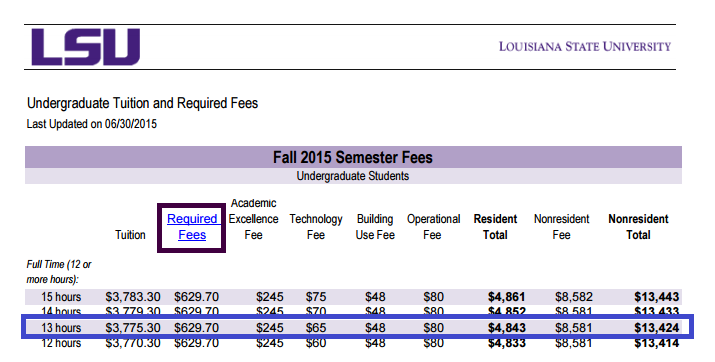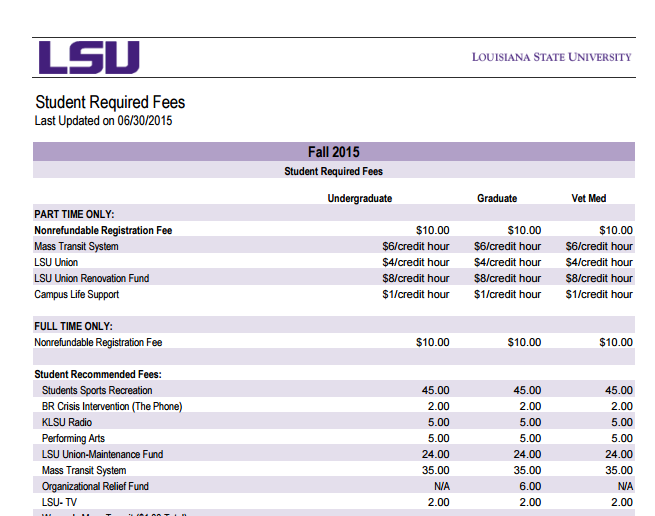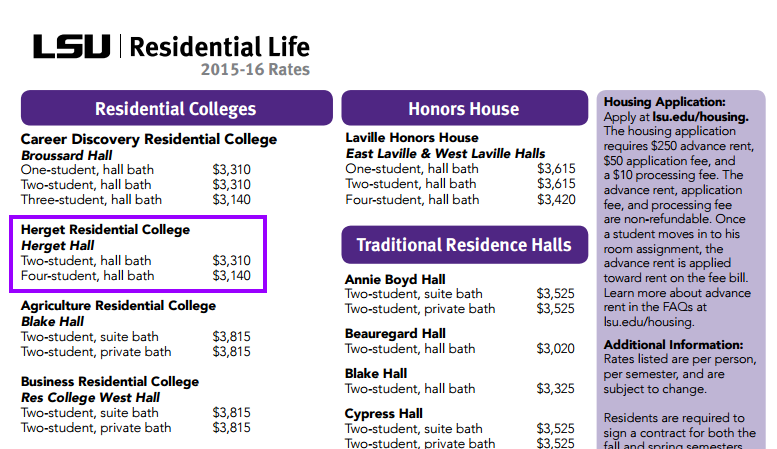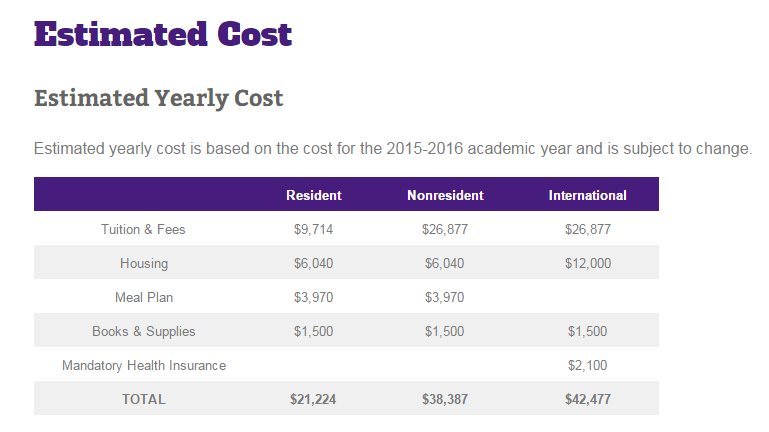
Financial Aid Word of the Week ~ Cost of Attendance
Financial Aid Word of the Week ~ Cost of Attendance
The Cost of Attendance (COA) is the total amount it will cost you to go to college each year. It includes tuition and fees; on-campus room and board (or a housing and food allowance for off-campus students); and allowances for books, supplies, transportation, loan fees, and, if applicable, dependent care. It can also include other expenses like an allowance for the rental or purchase of a personal computer, costs related to a disability, or costs for eligible study-abroad programs.
Note: The Cost Of Attendance for graduate and professional programs is usually higher than for undergraduate programs.
[source: FAFSA]
Here is an example of the Cost of Attendance to attend LSU. Note: This is not an all-inclusive list. You should search COA for the colleges you plan to apply to and do a cost comparison.
[source: Louisiana State University]
Tuition:
Tuition is what colleges charge for the instruction they provide. Colleges charge tuition by the units that make up an academic year, such as a semester or quarter. An academic year typically runs from fall through spring.
Tuition at public colleges is often a bargain for state residents, but not for out-of-staters, who often pay double the tuition of residents.
Tuition at some colleges can vary by major. Students in the sciences, engineering, computing, pre-med programs, and the fine arts often pay more. For example, at University of Illinois Urbana-Champaign, students enrolled in the science and engineering programs paid $4,920 more in tuition for the 2013–2014 academic year. This is called “variable tuition” and it is worth checking into if you have a major in mind.
Fees:
Student fees run the gamut from library access and parking to student government and registration. Colleges usually provide a student fee total, breaking out only the most significant fees.
What else can be included? Typical items are ID cards, membership in the student union, health insurance, athletic facility usage, diplomas and graduation expenses, laboratory supplies, studio usage, computer access, local bus service, and student activities. At some colleges, first-year students must pay a one-time fee to cover orientation and administrative costs. If you want to know more about student fees, contact the registrar’s office, cashier, financial aid office, or admissions office.

Required Fees:

Housing & Meal Plan:
The cost of room and board depends on the housing and food plans you choose. On-campus housing can come in various sizes and shapes, including dorm- or apartment-style housing and meal plans.
Housing and meal options are usually available separately, so that you may live off campus but choose to have your meals on campus. Colleges usually provide room and board estimates for living off campus based on typical student costs. Of course, students living at home typically save big time on room and board costs.
LSU Department of Residential Life


Books & Supplies: [source: College Data]
Most colleges estimate and publish the average costs for books and supplies at their institution. In addition to textbooks, typical school supplies include printed class materials, extra required reading materials (such as classic novels for an English class), reference books, and the usual office supplies (such as pens, pencils, file folders, and notebooks). Some colleges include the cost of a computer and computer accessories. Some colleges don’t include these costs at all.


